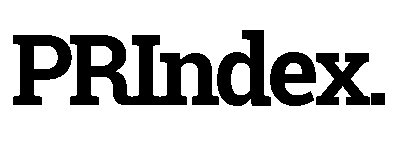On Nov. 13 in Bahrain, the Inter-Agency Expert Group on the Sustainable Development Goal Indicators voted to reclassify SDG Land Indicator 1.4.2 from Tier III to Tier II status. This is a significant win for the property rights community, and a validation that a coordinated effort from many different players can indeed make a difference.
However, the road there was not easy.
Tier III, which Indicator 1.4.2 occupied until this month, is the lowest possible status for prospective SDG indicators. Tier III indicators have no agreed upon methodology, standards, or data collection strategy, and are therefore at the highest risk of being dropped from the SDGs altogether.
To be reclassified from Tier III to Tier II, an indicator must be conceptually clear, and have an internationally established methodology and available standards. Yet, as recently as 6 months ago, Indicator 1.4.2 was far from meeting these criteria—it had no established metadata, not a single Expert Group Meeting or consultation on the indicator had been held, and if there was a clear path to reclassification, most of us didn’t know it. Most National Statistics Offices, who carry the primary responsibility for collecting indicator data, were not aware of or versed in Indicator 1.4.2, and were not collecting any data that could satisfy the indicator requirement.
In March 2017, on the sidelines of the World Bank Land and Poverty Conference, a group of donors and NGOs came together for a meeting with Indicator 1.4.2 Custodians, the World Bank and UN Habitat. The reclassification for Indicator 1.4.2 scheduled for Fall 2017, and coming up fast. The group recognized that unless the property rights community pulled together quickly to gather the needed inputs, the indicator wouldn’t be reclassified, leaving it in jeopardy of being removed from the SDGs altogether. The group determined that to get over the finish line, we needed better coordination, information flow, and support between the Custodians, who were doing the heavy lifting to shepherd the Indicator towards reclassification, and the broader property rights community, which had been working for years to gather property rights data.
The group established the “Friends of the Custodians” committee, made up of 6 members: DFID; the Canadian Ministry of Foreign Affairs; the Millennium Challenge Corporation; Omidyar Network; the Global Land Indicator Initiative (GLII); and the International Land Coalition (ILC). The purpose of the “Friends” committee was to support the hard work of the SDG 1.4.2 Custodians towards reclassification of the indicator to Tier II by Fall 2017, and Tier I by 2020.
Between April and November of 2017, the “Friends” acted as a liaison between the Custodians and the broader property rights community, channeling information from the Custodians on progress and needs towards reclassification. It gathered evidence of regional pilots – a prerequisite for reclassification – from property rights experts and funneled it to the Custodians. “Friends” members, particularly GLII, helped pull together Expert Group Meetings, coordinating a broad review of the SDG 1.4.2 metadata and reclassification submission documents. And, the Friends assisted in promoting and spreading awareness about the importance of 1.4.2, through Webinars, blogging, and advocacy in various fora.
The Friends group was just one of many stakeholders rowing in unison towards the Reclassification Line. As the Custodians flew to Bahrain, the entire property rights community held its breath: Would the efforts be enough? As it turned out, yes; our collective, strategic action worked.
But now is where the real work begins. In order for SDG Indicator 1.4.2 to move up to Tier I and solidify its place within the SDGs, we must gather indicator data from 50% of the world’s countries by 2020. To do that, we need to once again work collectively. Just as a broad range of actors banded together to collectively push SDG 1.4.2 from Tier III to Tier II, so a broad range of actors must come together to supply the data, analysis, training, and advocacy needed to push 1.4.2 into Tier I.
National Statistics Offices (NSOs) of member countries will be primarily responsible for gathering SDG 1.4.2 data needed to support Tier I status. However, as the UN Sustainable Development Solutions Network points out in a recent report, while Governments should lead the SDG Indicator process, they cannot be the only ones producing and sharing indicator data:
Private companies, universities, civil society and other third-party actors will need to contribute given the scale of the challenge. These partners can offer new skills, technologies, sources of data and analytical tools to improve our knowledge and understanding of sustainable development. Innovative (often privately-owned) sources of data can also provide a useful “check and balance” on government reporting, ensuring governments are fulfilling their commitments to the SDGs and are carefully managing the data at their disposal.
Initiatives like PRIndex offer opportunities for third party data collection on perceptions–the data more challenging to measure–in collaboration with NSOs. Additionally, platforms like Land Portal and ILC serve as megaphones to amplify messages around the importance of 1.4.2, coordinate efforts across civil society actors, and monitor data collection. GLII offers technical expertise and capacity building for NSOs and others attempting to gather this data for the first time, as well as a common platform for data collection.
The point is that now, more than ever, we need to collaborate. Given the scope, complexity, and cost of moving from Tier II to Tier I, no single actor will achieve Tier I alone. To reach this important goal, we must learn from the last six months: coordinated and collaborative action is the key to our success.




